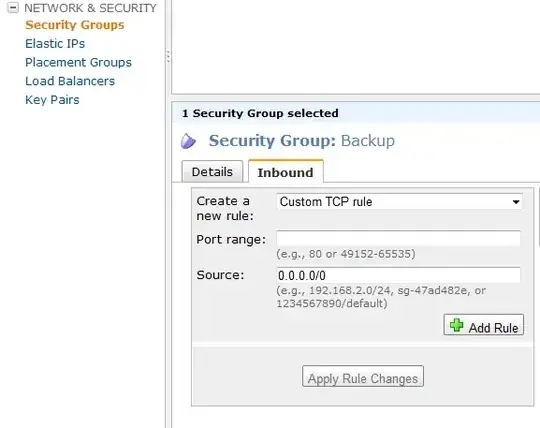I have an AWS ec2 instance. I have installed tomcat and now want to access it via the browser on port 8080. When I try to do so, the browser hangs. I HAVE ADDED 8080 TO THE DEFAULT SECURITY GROUP. I see that you can open different ports for different regions, I have added the port for every region.
Here is what I've done so far:
//install tomcat
# sudo yum install tomcat6
//open port on server
# sudo iptables -A INPUT -i eth0 -p tcp --sport 8080 -m state --state NEW,ESTABLISHED -j ACCEPT
//start tomcat
# sudo service tomcat6 start
//and rule to AWS security group for port 8080
AWS dashboard > ec2 > security groups > default group > inbound rule: 8080 (HTTP*) 0.0.0.0/0
//check via cli that tomcat is running on port 8080
# udo fuser -v 8080/tcp
(successful response) 8080/tcp: tomcat 16353 F.... java
//check via browser
http://ec2-instance-dns:8080 (browser tries to load page indefinitely)
